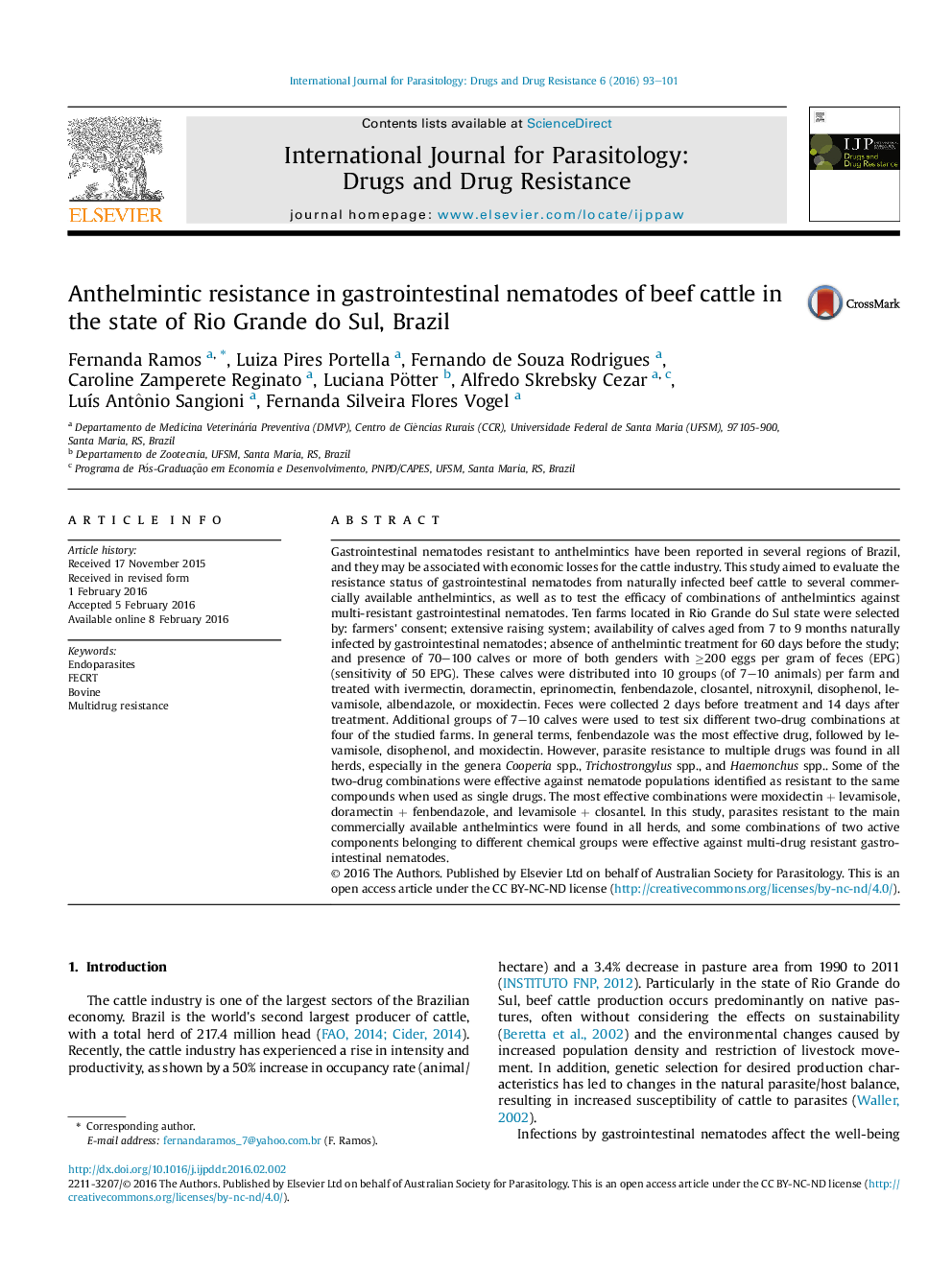| کد مقاله | کد نشریه | سال انتشار | مقاله انگلیسی | نسخه تمام متن |
|---|---|---|---|---|
| 2055132 | 1075729 | 2016 | 9 صفحه PDF | دانلود رایگان |
• Presence of multi-resistant populations of nematodes in all evaluated herds.
• On 60% of the farms, nine of the ten active compounds tested had efficacies <90%.
• All of the avermectins tested were ineffective in controlling nematode infection.
• Cooperia spp. was the most resistant genus.
• Increased efficacy using some drug combinations.
Gastrointestinal nematodes resistant to anthelmintics have been reported in several regions of Brazil, and they may be associated with economic losses for the cattle industry. This study aimed to evaluate the resistance status of gastrointestinal nematodes from naturally infected beef cattle to several commercially available anthelmintics, as well as to test the efficacy of combinations of anthelmintics against multi-resistant gastrointestinal nematodes. Ten farms located in Rio Grande do Sul state were selected by: farmers' consent; extensive raising system; availability of calves aged from 7 to 9 months naturally infected by gastrointestinal nematodes; absence of anthelmintic treatment for 60 days before the study; and presence of 70–100 calves or more of both genders with ≥200 eggs per gram of feces (EPG) (sensitivity of 50 EPG). These calves were distributed into 10 groups (of 7–10 animals) per farm and treated with ivermectin, doramectin, eprinomectin, fenbendazole, closantel, nitroxynil, disophenol, levamisole, albendazole, or moxidectin. Feces were collected 2 days before treatment and 14 days after treatment. Additional groups of 7–10 calves were used to test six different two-drug combinations at four of the studied farms. In general terms, fenbendazole was the most effective drug, followed by levamisole, disophenol, and moxidectin. However, parasite resistance to multiple drugs was found in all herds, especially in the genera Cooperia spp., Trichostrongylus spp., and Haemonchus spp.. Some of the two-drug combinations were effective against nematode populations identified as resistant to the same compounds when used as single drugs. The most effective combinations were moxidectin + levamisole, doramectin + fenbendazole, and levamisole + closantel. In this study, parasites resistant to the main commercially available anthelmintics were found in all herds, and some combinations of two active components belonging to different chemical groups were effective against multi-drug resistant gastrointestinal nematodes.
Figure optionsDownload as PowerPoint slide
Journal: International Journal for Parasitology: Drugs and Drug Resistance - Volume 6, Issue 1, April 2016, Pages 93–101
